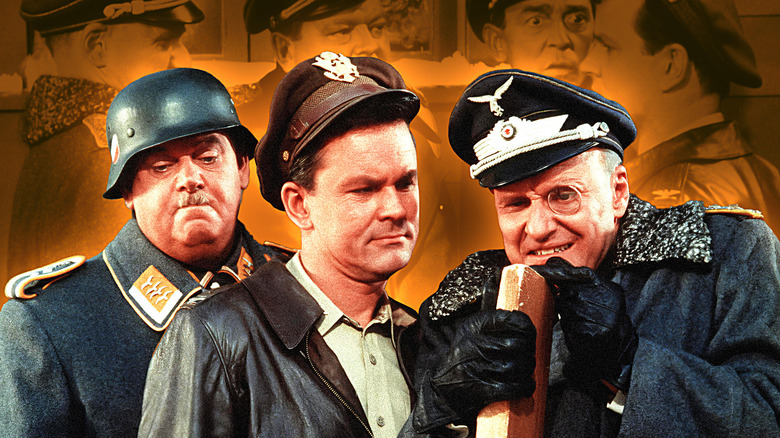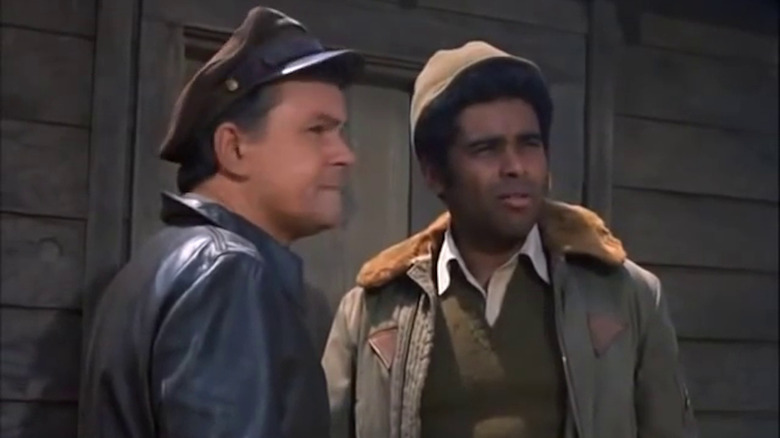We might obtain a fee on purchases created from hyperlinks.
In 1953, Billy Wilder scored a crucial and industrial success along with his movie adaptation of Donald Bevan and Edmund Trzcinski’s stage play “Stalag 17” (considered one of his 14 finest movies in line with /Movie). Set in a World Struggle II POW camp behind Nazi enemy traces, the film is a rambunctious account of how imprisoned troopers misbehave and try and make their captors’ lives depressing. They’re additionally ever on the verge of hatching a brand new escape plan, although they wind up having a rat of their ranks who complicates their efforts.
Provided that World Struggle II was a desperately bloody affair on each the European and Pacific fronts because the Allies fought to avoid wasting civilization from the clutches of genocidal vermin, you won’t assume it applicable for artists to search out humor anyplace throughout the battle. However the capability to giggle when issues are at their darkest is important to surviving such dreadful instances. In any case, if we lose the whole lot that makes life value dwelling, what are we preventing for within the first place?
So, sure, a skillful filmmaker like Billy Wilder can get away with a spectacularly entertaining comedy about jail camps. On a level of better issue, Ernst Lubitsch and Jack Benny can wring big laughs from a personality nicknamed “Focus Camp Ehrhardt” in “To Be or To not Be.” However is a sitcom actually the very best venue to make WWII hay?
20 years after the top of the battle, American tv viewers determined the time was proper for weekly POW camp yuks once they made “Hogan’s Heroes” one of many top-rated sitcoms on tv. The CBS sitcom starred Bob Crane as U.S. Colonel Robert E. Hogan, a slightly cavalier chap who orchestrates all method of mayhem and sabotage across the premises of Stalag XIII. He is aided by fellow captured troopers like LeBeau (Robert Clary), Kinchloe (Ivan Dixon), and Newkirk (future “Household Feud” host Richard Dawson), and really hardly ever stymied by the incompetent Nazi duo of Colonel Klink (Werner Klemperer) and Sergeant Schultz (John Banner). The sequence was canceled in 1971, so you will not be shocked to be taught that every one of those actors are lifeless (although you might be shocked to find out how Crane died in 1978, which is depicted in Paul Schrader’s underrated “Auto Focus”).
However there’s one remaining member of Stalag XIII nonetheless with us, and I am afraid it is not Larry Hovis.
Kenneth Washington (Sergeant Richard Baker)
Kenneth Washington’s profession bought off to an early begin when, on the age of 10, he appeared in Norman Taurog’s “The Birds and the Bees” (a ho-hum remake of Preston Sturges’ screwball comedy traditional “The Woman Eve”). After an 11-year absence from films, he made his tv debut on an episode of the CBS drama “Daktari.” With this, Washington was off and working, touchdown an eight-episode run on “Adam-12” as Officer Miller, and reserving visitor spots on noteworthy exhibits like “Star Trek” (as redshirt John B. Watkins within the episode “That Which Survives”), “That Lady” and “Petticoat Junction.”
When Ivan Dixon left “Hogan’s Heroes” after the fifth season, Washington stepped in as radio operator Sergeant Richard Baker. This, alas, proved to be the ultimate season of the sitcom. Thereafter, Washington returned to guesting on exhibits like “Marcus Welby, M.D.,” “Police Story” and “The Rockford Recordsdata.” He additionally made a short look in Michael Crichton’s “Westworld” (not the HBO sequence). Save for a pop-in on “A Totally different World” in 1989, Washington has evidently been retired from appearing.



